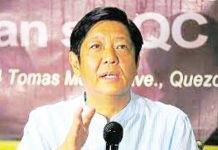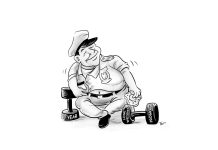[av_one_full first min_height=” vertical_alignment=” space=” custom_margin=” margin=’0px’ padding=’0px’ border=” border_color=” radius=’0px’ background_color=” src=” background_position=’top left’ background_repeat=’no-repeat’ animation=”]
[av_heading heading=’RURAL UPDATE ‘ tag=’h3′ style=’blockquote modern-quote’ size=” subheading_active=’subheading_below’ subheading_size=’15’ padding=’10’ color=” custom_font=”]
BY JOHNNY NOVERA
[/av_heading]
[av_textblock size=” font_color=” color=”]
The parliamentary system of government
THIS IS a continuation of the subject of our column last week on the parliamentary system of government that our President and his allies in the current Congress are vigorouslypushingfor approval.
Democracy is spreading throughout the world. However, according to a recent study, the structure of democracy may have profound influences on government spending.
Most democracies in Europe have parliamentary systems where the Chief Executive or Prime Minister is chosen by an elective legislature.
The other form of democracy is presidential democracy, such as those in the US, Mexico or ours where the president is elected by the people independently of the legislature.
Parliamentary governments have greater legislative cohesion because parties must join in alliances with one another to gain the majority and choose a prime minister. On the other hand, presidential congressional democracies have greater separation of powers since the Legislature and the President can come from different political parties.
Parliamentary systems require party alliances, hence smaller parties may extractconcessionsfrom the prime minister because the latter needs the smaller parties to maintain his power.
To satisfy all the partners, the prime minister must engage in large amounts of spending which might require higher taxes. On the other hand, the separation of power inpresidentialgovernments can stall legislative initiatives, demand less spending and consequently less taxation.
It is reported that the average parliamentary regime spends 37percentof the gross domestic product (GDP) while presidential regimes spend only 20percent of the GDP on the average.
In other words, parliamentary regimes spend 17 to 18percentmore of their GDP thanpresidentialregimes. Even accounting for other differences between countries, spending by parliamentary governments is 10percent points of the GDP higher than presidential governments. (To be continued)
***
A TRIBUTE
Rural Update would like to extend our deepest sympathy to the family of the late Jose “Pepe” S. Layson of Fundidor, Molo, Iloilo City who passed away on Oct. 21, 2016 and interred after church rites at the MoloCatholic Cemetery on the 29th, especially to his surviving children, Chona, Joe Marie, Edward and their families.
Pepewas a long-time friend and compadre of ours, being the godfather to our youngest daughter, Jill N. Peters, who has married and now lives in the UK.
We were witness to a great life lived by a man who was always agoodfriendandhelpfultomanypeople in his private, business and community life.
May the good Lord share you His great love as you did yours while you were with us, Pare Pepe.You will always be in our prayers. (For comments or reactions, please e-mail jnoveracompany@yahoo.com or text to 09084683945)/PN
[/av_textblock]
[/av_one_full]







